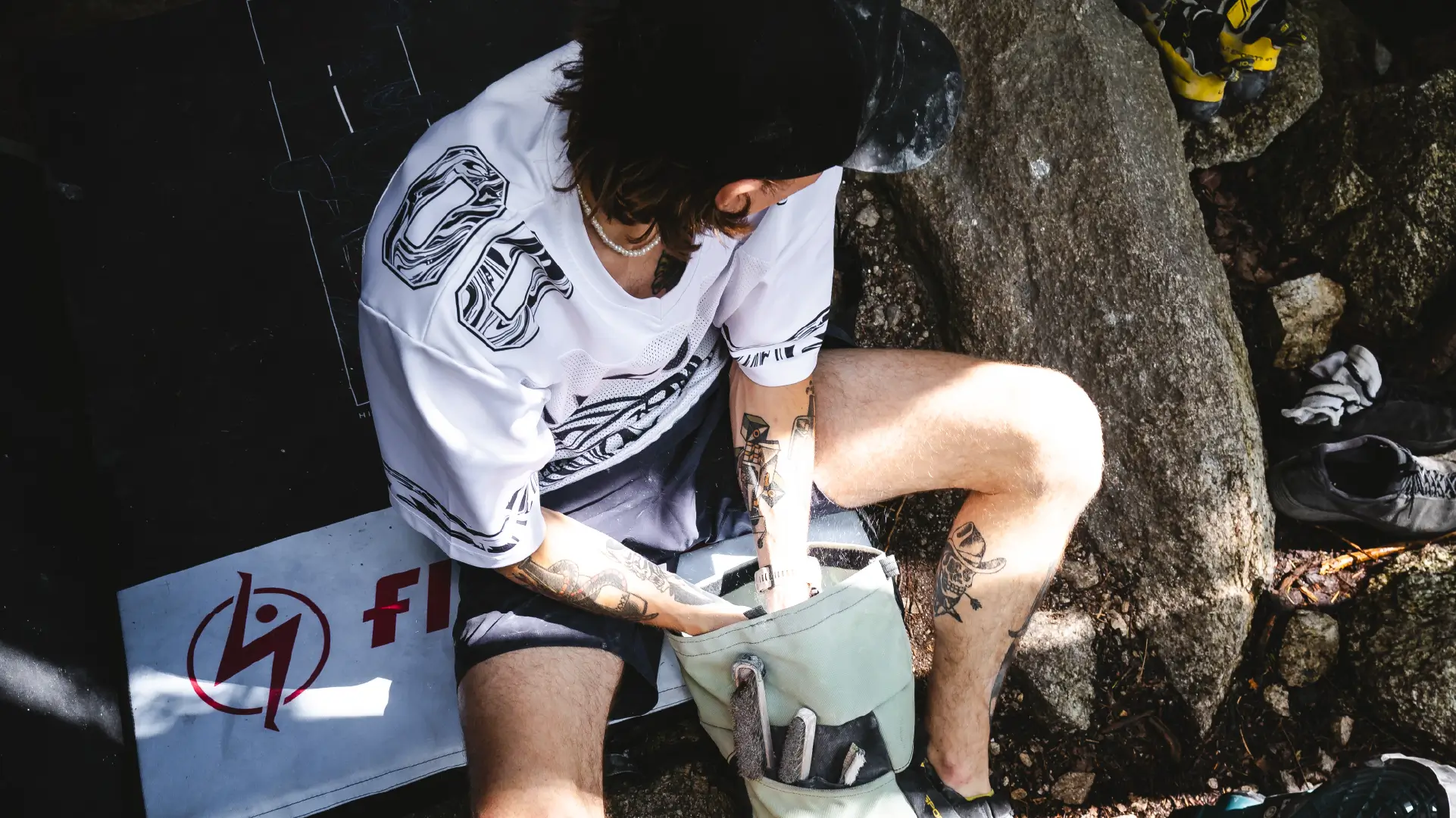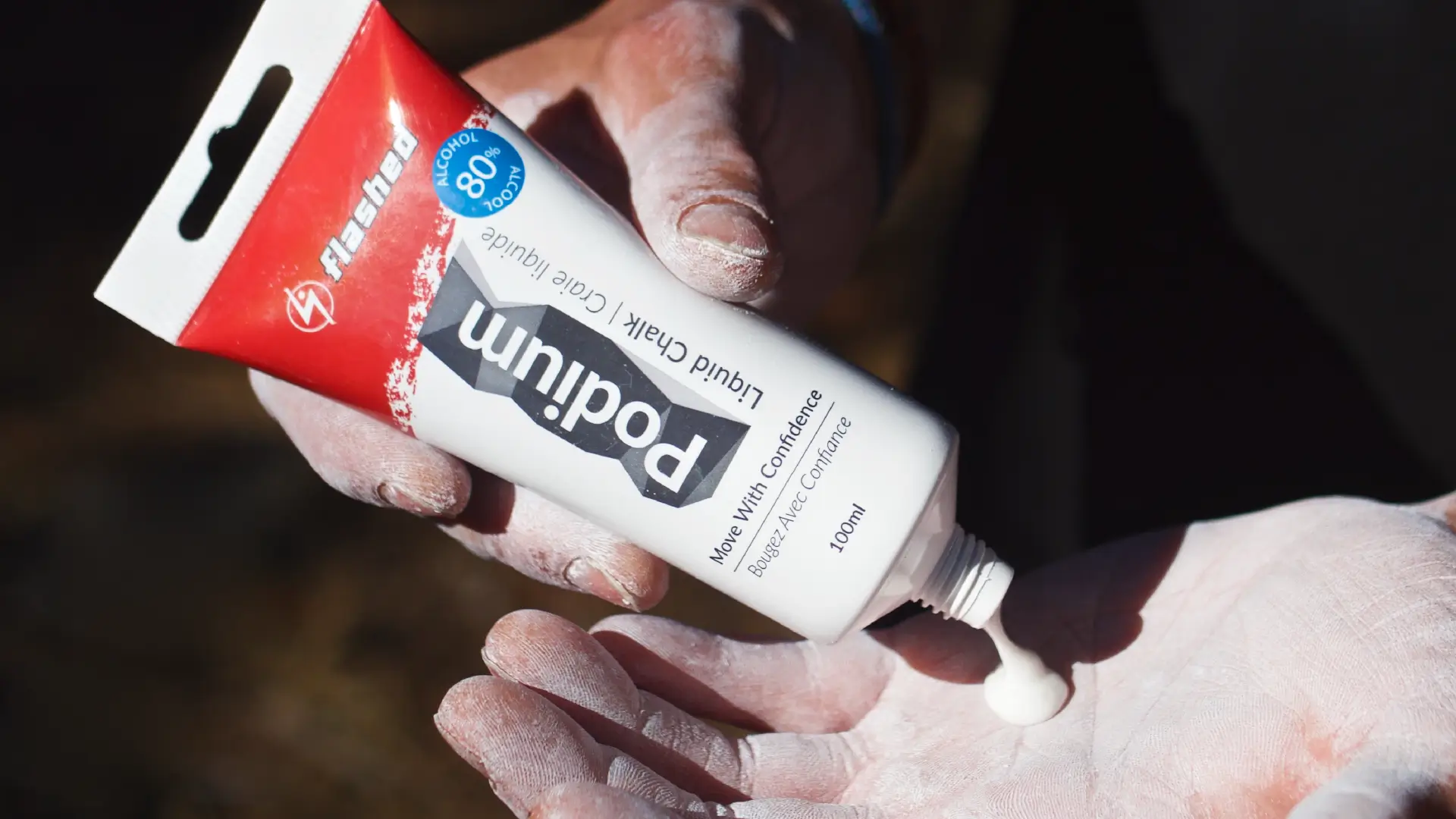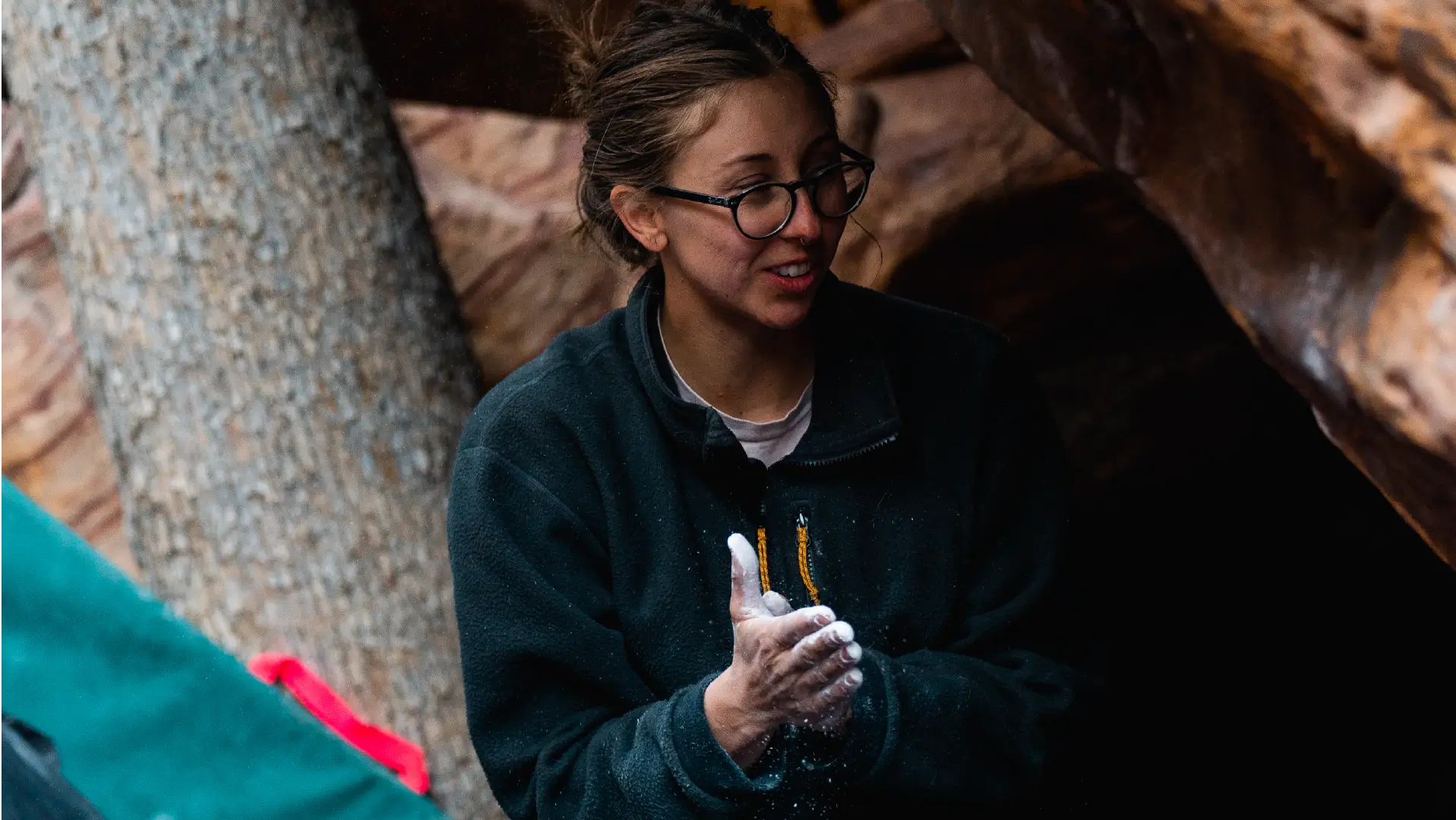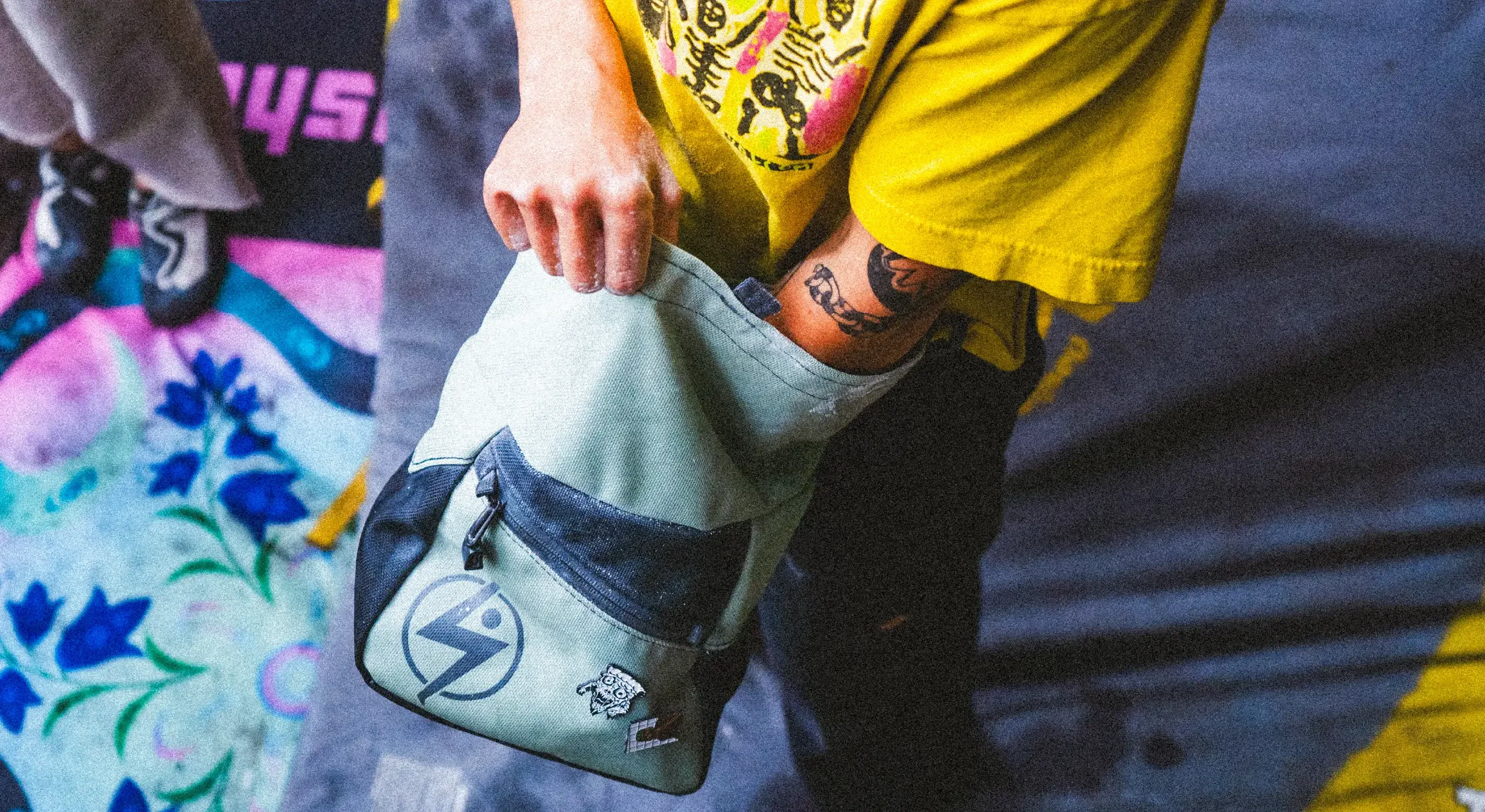Climbing chalk is a game-changer when it comes to maintaining a confident grip on the wall. Whether you’ve just started rock climbing or you’ve been scaling for a while, having dry hands can be the difference between sending your next project and slipping off the wall. Below is everything you need to know about climbing chalk—what it is, how it’s made, why you might want it, and how to use it properly.
Below is your guide to understanding climbing chalk and how to use it
This guide focuses on the key points of climbing chalk: its composition, its role in helping you maintain friction on the holds, and how to avoid common mistakes that climbers make with chalk. By the end, you’ll have all the information you need to chalk up correctly and climb with more confidence.
What is Climbing Chalk and Why Should You Use It?
Climbing chalk is typically magnesium carbonate (MgCO₃). It absorbs sweat from your hands, improving friction on the climbing holds. If you’ve ever felt your palms get slippery in the middle of a climb, you’ll understand why chalk is so useful. When your hands are dry, you can grip better and focus on your technique instead of worrying about slipping.
Some brands add extra drying agents to the chalk, which can help if you have very sweaty hands. However, these agents can sometimes irritate your skin or leave it overly dry. It all comes down to personal preference and testing different types of chalk until you find one that feels comfortable for you.
How is Climbing Chalk Made
Most climbing chalk starts as magnesite, a mineral mined from the earth. This mineral is then processed and refined to remove impurities, resulting in a form of magnesium carbonate that clings to moisture effectively. Chalk can come in multiple different forms, including blocks, loose, liquid, or in a chalk sock/ball. In the end, each product aims to keep your hands as moisture-free as possible for the best climbing experience.

What Does Climbing Chalk Do?
The main goal of chalk is to absorb sweat, helping you maintain friction. When your hands are sweaty, they can slip off holds more easily. Chalk solves that problem by drawing out moisture and allowing you to grip better, whether on small edges, slopers, or big jug holds.
- Improved Grip – Dry hands mean better control on the wall.
- Confidence Boost – Many climbers feel mentally more prepared after chalking up.
- Reduced Risk of Slip – Less hand-sweat means fewer unexpected slips at crucial moments.
How to Choose Chalk and a Chalk Bag
Chalk Types
- Block Chalk: Compressed into a block.
- Loose Chalk: Available in various textures, from fine powder to chunky flakes.
- Chalk Balls: Fine chalk in a porous fabric pouch. Minimizes mess but might require frequent squeezing.
- Liquid Chalk: A cream that dries quickly, leaving a consistent layer of chalk on your hands—often good as a base layer.
Chalk Bags and Buckets
- Personal Preference: Some climbers like a classic cylinder bag; others prefer fun designs or larger buckets.
- Extra Features: Look for a zipper pocket, brush holder, or adjustable strap if you like carrying extra small items.
There isn’t a “universal best” option—just the one that feels right for your climbing style and how your hands respond to chalk.

How to Use Climbing Chalk
- Prep Your Hands
- Wash and dry them before climbing if possible. Clean hands help chalk stick and last longer.
- Apply Chalk
- Loose Chalk or Chalk Ball: Dip your hand in the bag or bucket. Move your fingers around to coat them and your palm.
- Liquid Chalk: Squeeze a small amount into your palm, rub it evenly across your hands, and wait a few seconds for it to dry.
- Distribute Evenly
- Work the chalk into your fingers and palms. Blow off or lightly shake off any excess. You want a thin, even layer instead of clumps.
- Reapply as Needed
- During your climb, if your hands start feeling slick, reach back into your chalk bag or reapply liquid chalk. Sometimes just rubbing your palms together can redistribute existing chalk to your fingertips.
How NOT to Use Chalk
- Don’t Create Massive Clouds
- Tossing chalk in the air might look dramatic, but it makes the gym dusty and can irritate other climbers’ lungs.
- Avoid Dumping Chalk
- Pouring chalk directly onto your hands wastes a lot. It’s also messy. Instead, use your chalk bag or bucket to apply it gradually.
- Brush Off Tick Marks
- If you mark holds with chalk lines (tick marks), be sure to brush them off when you’re done. This keeps routes clean and fair for other climbers who want to find their own solution.

FAQs About How to Use Climbing Chalk
1. How often should I chalk up during a climb?
Most climbers re-chalk whenever their hands feel sweaty or slippery. This can be before a tough move, at rest points, or after each attempt on a route if your hands sweat a lot.
2. Can I use the same chalk for bouldering and rope climbing?
Yes! There’s no specific “bouldering chalk” or “rope-climbing chalk.” All climbing chalk is designed to help with grip and sweat absorption, so use what you prefer.
3. Is liquid chalk better than loose chalk?
Liquid chalk provides a base layer that can last longer in some conditions. However, it’s really up to personal preference and how sweaty your hands get. Many climbers use a combination: liquid chalk first, then loose chalk for touch-ups.
4. Does climbing chalk expire?
Properly stored chalk in a cool, dry place can last a very long time. If it gets damp, it might clump or lose some effectiveness, but you can often crush the clumps and still use it.
5. What is Flashed Climbing, and do they sell chalk?
Yes Flashed sells chalk in all forms as well as Seawater Chalk! Flashed Climbing is a brand known for producing climbing gear, including pads, chalk, and accessories that cater to the needs of boulders.
6. Where can I buy Flashed Climbing products?
You can purchase Flashed Climbing pads, chalk, and related gear through their official website and authorized retailers. Some local climbing gyms or specialty shops also carry Flashed products.
7. Does Flashed Climbing offer beginner-friendly gear?
Yes. Flashed Climbing provides various options suited for beginners to advanced climbers, so you can find bouldering pads, accessories, and other equipment that fit your skill level and style.
By following these guidelines on how to use climbing chalk, you’ll be able to keep your hands dry, your grip secure, and your focus on the next hold. Remember to choose the type of chalk that matches how much you sweat, and invest in a chalk bag or bucket that feels comfortable and suits your style. Keep things tidy, and don’t forget to wash and moisturize your hands afterward to prevent dry skin. With the right approach, chalk can make every climb feel more controlled and enjoyable. Happy climbing!


